
“Higher Power” by Coldplay:
“A small body of determined spirits fired by an unquenchable faith
in their mission can alter the course of history.”
Mahatma Gandhi
“Tubular Bells” by Mike Oldfield (courtesy of MBC Roots):
“I never worry about action,
but only inaction.”
Winston Churchill
One of the greatest rivers in the world, the Thames, has shaped our culture. At the beginning of the 20th century, the great river developments of the previous century were coming to fruition. The docks were working at full capacity, and the position of London at the heart of the Empire meant that the Thames was in itself the river of Empire, the great market that made this country wealthy. The London embankments hosted many industrial and financial powerhouses. The names of the streets gave an indication of the trade like Cloth Street that was the centre of the cotton industry. The Thames flanked great factories, warehouses, and above their chimneys loomed the great dome of St Paul’s.

Courtesy of SkyEye Britain:

Courtesy of THEWORLDOFTRAVEL:
Courtesy of smarthistory:
The world of the City and Westminster combined finances and power in one magnificent arc of the river. The whole Palace of Westminster is worth a description, including Big Ben, but the unknown gem of the political powerhouse is the hidden;
ST MARY UNDERCROFT
PALACE OF WESTMINSTER
SW1A OAA

With its stupendous hammerbeam roof erected between 1394 and 1401 for Richard II, Westminster Hall is celebrated as the finest timber-framed medieval structure in the world, but far less known is the exquisite Chapel of St Mary Undercroft. It is of great architectural significance as its original master masons, Michael of Canterbury and his son, Thomas, were devotees of the complex geometrical forms in which lay the origins of the later Decorated Gothic style. Its vaults, forming stellar and other patterns, are believed to be the oldest in England. For a long period, the chapel was used as the debating chamber of the House of Commons, but it also endured many indignities. Oliver Cromwell had the crypt whitewashed and used it as a stable for his horses.

The internal restoration was carried out by Charles Barry’s son, E M Barry, over a 10-year period, between 1860 and 1870, but the end result was a gorgeous masterpiece encrusted with gold mosaics with stained glass, an alabaster dado and a floor of marble and Minton tiles. In the east end, the windows were replaced with full-length figures of martyred saints. The altar rails and gates with their kneeling angels were modelled on the grille made in 1294 for the tomb of Eleanor of Castile in Westminster Abbey. Today the principal entrance to the undercroft is via a staircase in the south-east corner of Westminster Hall.




Photos above credit: Ben Kenyon

The responsibility of recycling sewage belongs to the Dockland Development Corporation and those fascinating works are open at certain times to the public. I visited the place and I was surprised at the ingenuity of recycling human waste. The dirty Thames water is cleaned before being returned to the river, and some to a reservoir for drinking and cooking with. I don’t need to write about Greenwich in detail, as it is so well-known, so I won’t, except to mention the invention of the longitude clock which is there, created by a carpenter with no formal education. His ideas were dismissed several times as no one in the academic authority believed that a seemingly simple man was capable of inventing anything as important, but in the end, he succeeded, and the invention saved countless sailors’ lives. Also, that is where Cutty Sark can be visited.
Courtesy of SciShow:
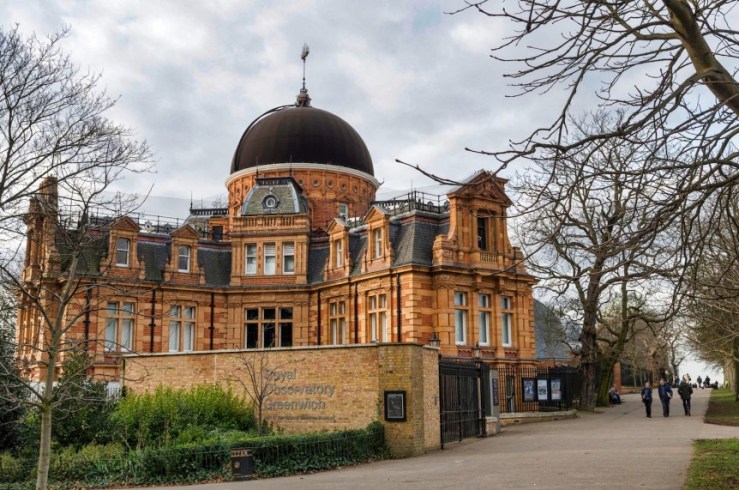


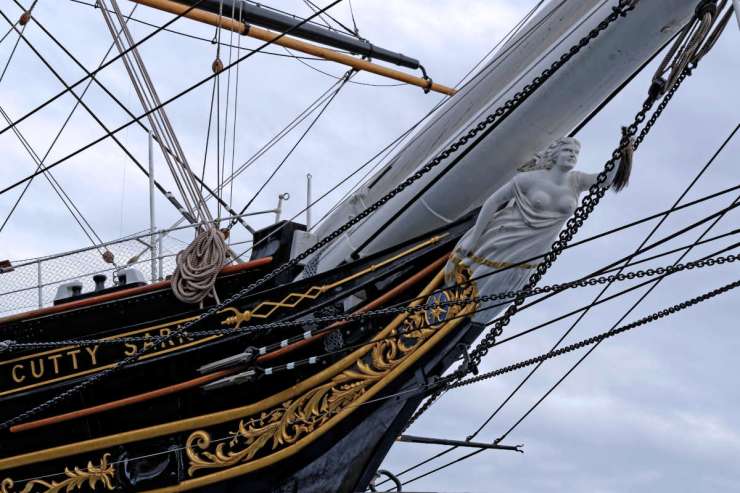
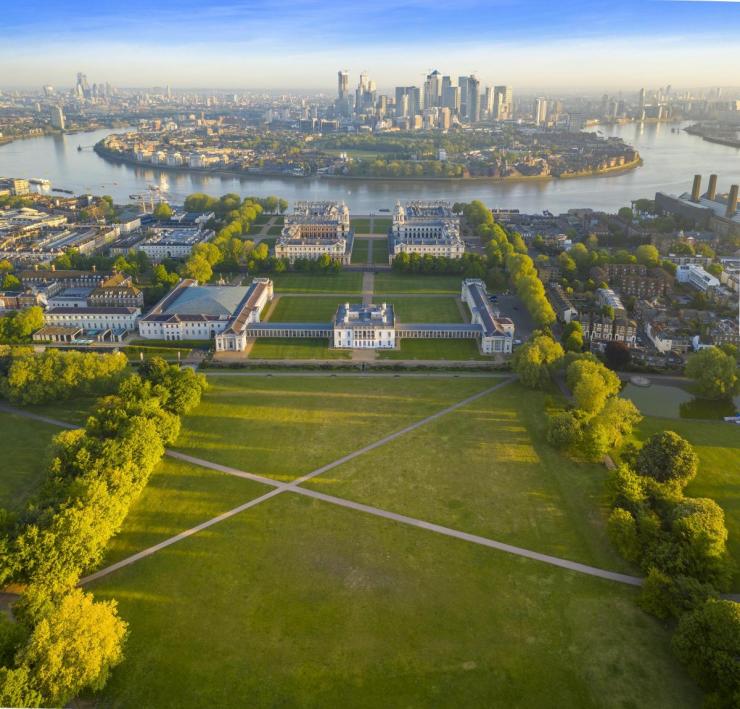

Close by, there is the Old Royal Navy College with the famous hand-painted ceiling above the vast gallery. In one part a portrait of Old Father Thames precedes an enormous tea-clipper, the symbol of wealth created by the selling of the various products brought or sent out via the river. It was designed by Sir Christopher Wren as a ceremonial dining room for what was then the new Royal Hospital for Seamen. Its vast decorating scheme was painted by Sir James Thornhill, the first British artist to be knighted, and started in 1707; it took 19 years to complete. It is open to visitors.

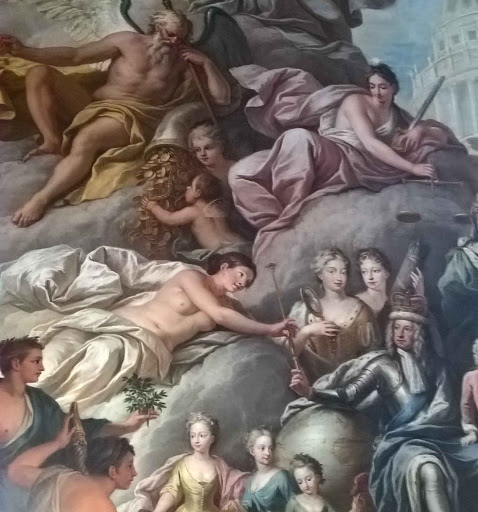

“Wellerman (Sea Shanty)” by Nathan Evans:
Also along the Thames, there is the world-renowned Tate & Lyle sugar refinery, producer of many sugar-derived products, including Golden Syrup, bought not only by royal households (Queen’s Warrant) but by most countries in the world.

Famous logo of bees feeding on a dead lion:

‘Out of the strong came forth sweetness’, a quote from the Bible, used by Abram Lyle, who was a very religious man.
The story of the company Tate & Lyle is of interest here because the refinery has been one of the biggest users of the Thames, with anything up to 45,000 tonnes of raw sugar cane arriving each year by boats from the countries of Belize, Mozambique, Guyana, and Fiji.

The start of the process – the freshly arrived raw, crushed sugar canes are dropped from a crane to form giant pyramids in the antechamber of the factory.
Henry Tate (on left) and Abram Lyle (on right)


In 1878 Henry Tate opened up a new refinery in East London by the River Thames. Meanwhile, in 1883, Abram Lyle started his sugar refinery 1.5 miles from Henry Tate. Both owners were very successful and became very wealthy but they despised each other, and never met in their lifetime. Henry Tate was a great philanthropist and looked after his workers well. When he died in 1899 he bequeathed a large portion of his wealth to many good causes in the East End of London, and left his large and valuable collection of fine art and paintings to the nation; it later became the Tate Gallery in Pimlico.

It was in the early Twenties when the sons of both of the original owners merged the businesses and they became globally recognised as Tate & Lyle. They became the biggest employer in the East End. During World War II the refinery never stopped working, narrowly escaping the bombing. With men away at war, the production was taken over by women, called affectionately ‘Sugar Girls’. After the war, Tate & Lyle launched ‘the cube’, the boxes of sugar cubes. In the 1970s the future of the company was in doubt as a result of the quota restrictions imposed by the EU. With the UK now leaving the EU and restrictions lifted, the company can trade again with the whole world, and it means a positive new phase for the future of Tate & Lyle.

The Thames is now getting wider and more calm and serene. Just five miles before the Thames becomes the sea, comes the Thames Barrier. So far it has prevented flooding 183 times. A great investment.


Courtesy of Engineering Channel:
The Thames Estuary is wide, calm, and clear. It has great wildlife, fish, birds and seals, grey and harbour. The wildlife is well cared for, especially stranded baby seals.
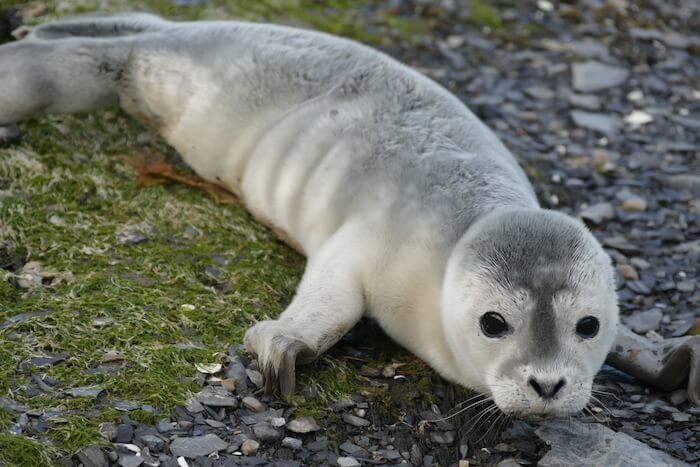

“The Seal Lullaby” by Eric Whitacre, performed by Voces8 and Lavinia Meijer:


Courtesy of BBC Earth:
That is London and the Thames now but there is the glorious past, waiting to be discovered in hidden places that are very much worth a visit.

GEO F TRUMPER
9 Curzon Street, Mayfair, W1J 5HQ
This traditional gentlemen’s barbershop was opened in 1875 by George F Trumper. The present, stone-faced building was not erected until around 1912. It attracted aristocratic and military clientele because the shop felt more like a luxurious gentlemen’s club than a barber’s shop, with its individual mahogany cubicles, and glass display cases from the early 20th century full of fragrant scents.

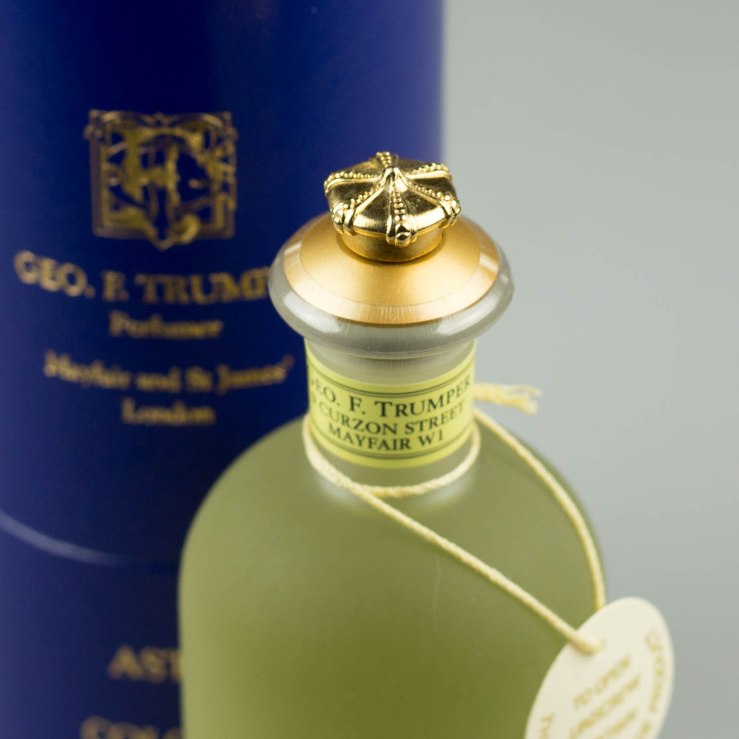
Inside, the individual private cubicles are divided by glazed mahogany screens with dark red velvet curtains; the walls lined with hunting scenes and shelves of the firm’s world-famous colognes, grooming products, and shaving accessories. Beneath the display cases is a dado lined with plush studded green leather. For any gentleman in need of a haircut, it is the only barbershop worth visiting.

Courtesy of sunburyboy93:
GRANT MUSEUM OF ZOOLOGY
21 University Street, WC1E 6DE

The creator of this wonderfully unusual museum, Robert Edmont Grant (1793-1874) was born and educated in Edinburgh. He later became the first professor of zoology and comparative anatomy in England. His radical evolutionary views influenced a young Charles Darwin. On his arrival at University College, London, he found no teaching materials, so he immediately began his own collection, which forms the basis of the current museum.

It is not often that one comes face to face with the reproductive organs of a duck-billed platypus, three human skeletons seemingly engaged in casual conversation, a dodo, a Tasmanian tiger (both hunted to extinction), the skulls of an African and an Asian elephant; the bones of a gorilla, rhinoceros, wolf, and lion. The collection of 67,000 specimens includes many rare artefacts. The museum collection, which is still used for teaching purposes, is calculated to bring out the ghoulish inner in every visitor.

Courtesy of Time Out:
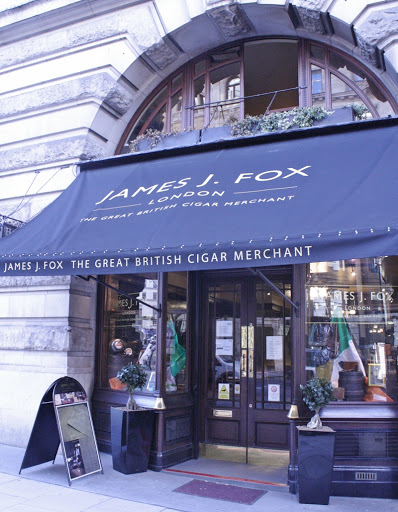
JAMES J FOX / ROBERT LEWIS
19 St James Street, SW1A 1ES
“Robert Lewis is the most beautiful cigar shop, barring none – in London or elsewhere… If I had to live in a shop I would dwell in Robert Lewis forever.”
Wrote one of the enchanted visitors to the longest-established cigar merchant in Britain. Located behind an elegant, angled oak shopfront, it is a place of pilgrimage for cigar devotees. The firm was founded as a stockist of snuff, pipes, pouches and other smoking sundries by Christopher Lewis in 1787. ‘Tobacco wrapped in a leaf’ was brought back to England by troops returning from the Peninsular Wars and, as its popularity increased, Robert Joseph Lewis took over the firm in 1855, he and later his son Henry, rapidly built up a clientele drawn from a wide cross-section of society, acquiring the first of eight royal warrants from the second son of Queen Victoria, HRH the Duke of Edinburgh in the 1880s. Oscar Wilde was a customer, ordering special cigarettes, on each he had painted the name Oscar in red letters. The original ledgers show he left a sizeable debt of 7s3d.
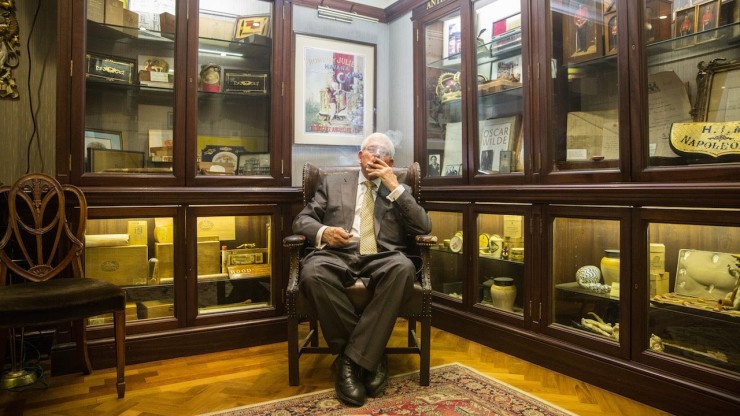
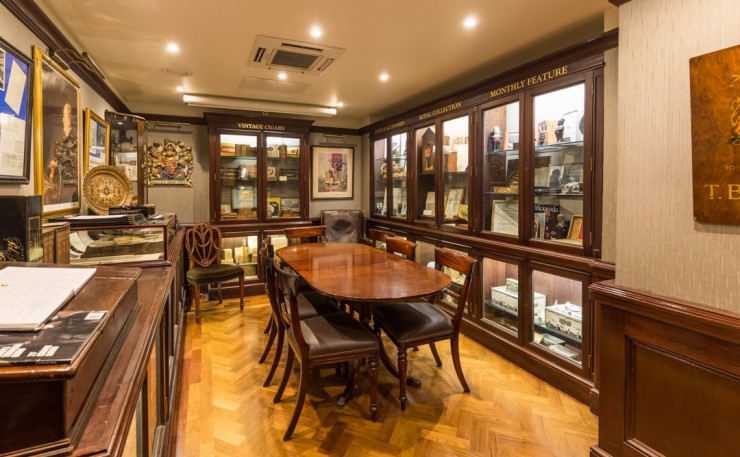
Winston Churchill was a customer for over 60 years, introduced by his mother who had a particular penchant for the firm’s handmade, gold-tipped Alexandra Balkan cigarettes, which she smoked through an amber holder. The shop retains all the aspects of the traditional tobacconist, complete with a carved wooden figure of a Red Indian and a smoking room for clients.

Above is the oldest box of cigars in the world
In the basement is a fascinating museum of memorabilia including the oldest box of cigars in the world, made for the Great Exhibition of 1851, Churchill’s chair, a hand-blown Bristol glass pipe of 1787, hookahs, commemorative cigar bands, and many other items. Now trading as James J Fox, the firm continues to offer 18 marques of Havana in over 150 different shapes and sizes. It is a measure of London’s extraordinary global reach that it is the cigar capital of the world.
Below is the chair in which Churchill sat while selecting cigars in the shop.

Below are Churchill’s cigars and case, bequeathed to the shop.


NEW HALL AND LIBRARY
LINCOLN’S INN
WC2A 3TL

Courtesy of LincolnsInnVideo:
A few years ago, I went with an alumna of Oxford University, who would often take us to various interesting events that were organised by her College, Christ Church. One, to a Christmas Dinner at the New Hall, which was such a grand and exceptionally interesting event that I had to include it in my post about hidden London. From the giant, exquisite and beautifully decorated Christmas tree, standing in the square outside the Hall to the antechamber with the portraits of all the barristers who worked there over centuries, the Hall was magnificent. It had wood panelling and ceiling made from timber obtained from dismantling conquered ships of the Spanish Armada, tall stained glass windows, and many oil paintings.

By the early 19th century, membership of Lincoln’s Inn had expanded so much that it was decided to build a whole new range of facilities. The result was a dramatic new complex of wonderfully romantic neo-Tudor buildings soaring above the boundary walls to Lincoln’s Inn Fields – complementing and enhancing the adjacent 17th and 18th-century collegiate courtyards of the older parts of the Inn. The New Hall and Library building were completed in 1845. Much of the detail was executed in bright red diapered brick with stone dressing to echo the character and texture of the oldest part of the Inn. A huge central lantern breaks the roofline to reinforce its romantic external skyline. Seen in conjunction with the spires of Street’s Royal Courts of Justice beyond, it is one the most sublime views in London.

The interiors are breathtaking. The Hall is over 60ft high. Commanding the entire hall is a huge fresco of ‘The Lawgivers painted in 1852-3 by George Frederick Watts, featuring the great lawmakers of history from Moses and Muhammad to Edward I and Charlemagne. The walls are panelled and carry the arms and portraits of past grandees. A lofty octagonal lantern links the Hall with the Library, which is rightly considered to be one of the most beautiful in the world – a phalanx of bookcases and iron galleries dividing the spaces into bays after another superb hammerbeam roof, all lit by great perpendicular stained-glass windows. At the centre of the space stands a statue of Lord Erskine (1830). With over 80,000 books, it holds one of the world’s oldest collections on law and jurisprudence. An unforgettable place to visit.

Again, it is the Thames, the great river, that created London and all the places we were visiting today.

Courtesy of Filmmaker School:
See you next week for more wonderful places and their remarkable stories.

The information you shared is valuable but the images you have chosen are excellent.
LikeLike
Thank you, Rupali, for your most kind comments. The images have chosen me because when you see the splendor around and above you you have to share them!
Your words are greatly appreciated.
Joanna
LikeLiked by 1 person
Those pictures are absolutely stunning . Thank you for sharing this valuable information.
LikeLike
Thank you, Joyce, for your wonderful comments! Greatly appreciated!
Joanna
LikeLike
Another great post about the history making features along the banks of the Thames. Your content is so varied and eclectic that I have difficulty imagining where you find it all. I really enjoyed the vocal music piece “The Seal Lullaby”. It was so very peaceful.
If you have a fascination with the difficulties of early navigation on the oceans this book is a great read. The True Story of a Lone Genius Who Solved the Greatest Scientific Problem of His Time by Dava Sobel. Stewart
LikeLike
Thank you, Stewart, for your amazing effort of reading so many posts and for commenting! I have just woken up and saw your wonderful review. I have Dava Sobel books and know the story from many other sources, but his persistence in proving that he was right impressed me, I didn’t mention Dava Sobel because I was running out of space. I must as well tell you that I have over
10 thousand books in my library and finding inspiration and information is easy.
Thank you again, Stewart. Greatly appreciated.
Joanna
LikeLike